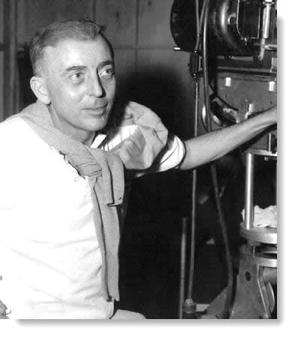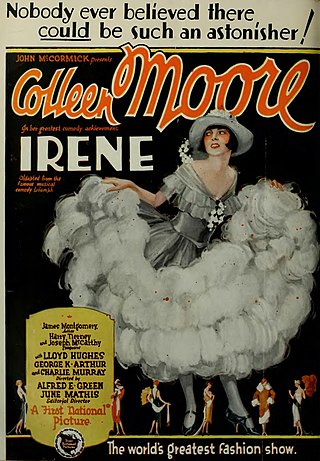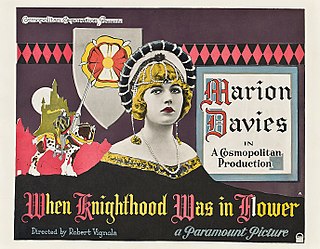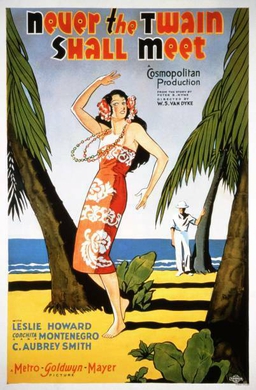
Marion Davies was an American actress, producer, screenwriter, and philanthropist. Educated in a religious convent, Davies fled the school to pursue a career as a chorus girl. As a teenager, she appeared in several Broadway musicals and one film, Runaway Romany (1917). She soon became a featured performer in the Ziegfeld Follies.

Herman Jacob Mankiewicz was an American screenwriter who, with Orson Welles, wrote the screenplay for Citizen Kane (1941). Both Mankiewicz and Welles would go on to receive the Academy Award for Best Original Screenplay for the film. He was previously a Berlin correspondent for Women’s Wear Daily, assistant theater editor at The New York Times, and the first regular drama critic at The New Yorker. Alexander Woollcott said that Mankiewicz was the "funniest man in New York".

Louella Parsons was an American movie columnist and a screenwriter. She was retained by William Randolph Hearst because she had championed Hearst's mistress Marion Davies and subsequently became an influential figure in Hollywood. At her peak, her columns were read by 20 million people in 700 newspapers worldwide.

Show People is a 1928 American silent comedy film directed by King Vidor. The film was a starring vehicle for actress Marion Davies and actor William Haines and included notable cameo appearances by many of the film personalities of the day, including stars Charlie Chaplin, Douglas Fairbanks, William S. Hart and John Gilbert, and writer Elinor Glyn. Vidor also appears in a cameo as himself, as does Davies.

Charles Davies Lederer was an American screenwriter and film director. He was born into a theatrical family in New York, and after his parents divorced, was raised in California by his aunt, Marion Davies, actress and mistress to newspaper publisher William Randolph Hearst. A child prodigy, he entered the University of California, Berkeley at age 13, but dropped out after a few years to work as a journalist with Hearst's newspapers.

Smart Money is a 1931 American pre-Code drama film produced and distributed by Warner Bros., directed by Alfred E. Green, and starring Edward G. Robinson and James Cagney. It is the only occasion Robinson and Cagney appeared in a film together, despite being the two leading actors, mainly portraying gangsters, at Warner Bros. studios throughout the 1930s. Smart Money was shot after Robinson's signature film Little Caesar had been released and during the filming of Cagney's breakthrough masterpiece The Public Enemy, which is how Cagney came to play a supporting role.

Cain and Mabel is a 1936 romantic comedy film designed as a vehicle for Marion Davies in which she co-stars with Clark Gable. The story had been filmed before, in 1924, by William Randolph Hearst's production company, Cosmopolitan, as a silent called The Great White Way, starring Anita Stewart and Oscar Shaw. In this version, Robert Paige introduced the song "I'll Sing You a Thousand Love Songs", with music by Harry Warren and words by Al Dubin, who also wrote "Coney Island", "Here Comes Chiquita", and other songs.

Polly of the Circus is a 1932 American pre-Code MGM drama film directed by Alfred Santell and starring Marion Davies and Clark Gable.

Not So Dumb is a 1930 pre-Code comedy motion picture starring Marion Davies, directed by King Vidor, and produced for Cosmopolitan Productions for Metro-Goldwyn-Mayer.

Zander the Great is a 1925 American silent comedy drama film directed by George W. Hill, in his first directing role for MGM. The film stars Marion Davies. The screenplay by Frances Marion is based upon the Edward Salisbury Field 1923 play of the same name.

Irene is a 1926 American silent romantic comedy film starring Colleen Moore, and partially shot in Technicolor. The film was directed by Alfred E. Green, produced by Moore's husband John McCormick, and based on the musical Irene written by James Montgomery with music and lyrics by Harry Tierney and Joseph McCarthy.

Expensive Women is a 1931 American pre-Code film drama. It was produced by First National Pictures and distributed through their parent company Warner Bros. The film was directed by silent film veteran Hobart Henley and stars Dolores Costello. It was Costello's final film as a leading lady and star for Warners, which she had been since 1925. She retired to be the wife of John Barrymore and to raise their family. Costello would return to films five years later after a long hiatus and the end of her marriage to Barrymore, but never regained the luster she enjoyed as a Warners star.

When Knighthood Was in Flower is a 1922 American silent historical film directed by Robert G. Vignola, based on the novel by Charles Major and play by Paul Kester. The film was produced by William Randolph Hearst for Marion Davies and distributed by Paramount Pictures. This was William Powell's second film. The story was re-filmed by Walt Disney in 1953 as The Sword and the Rose, directed by Ken Annakin.

My Life with Caroline is a 1941 American comedy film directed by Lewis Milestone and starring Ronald Colman and Anna Lee, in her second Hollywood film and her first in a starring role. The screenplay was written by John Van Druten and Arnold Belgard.

Little Old New York is a 1923 American silent historical drama film starring Marion Davies and directed by Sidney Olcott that was based on a play of the same name by Rida Johnson Young. The film was produced by William Randolph Hearst's Cosmopolitan production unit.

The Fair Co-Ed, also known as The Varsity Girl, is a 1927 American silent film comedy starring Marion Davies and released through MGM. The film was produced by William Randolph Hearst, through Cosmopolitan Productions and directed by Sam Wood.

Never the Twain Shall Meet is a 1931 American drama film produced and distributed by Metro-Goldwyn-Mayer and starring Leslie Howard and Conchita Montenegro. It is based on the novel of the same title by Peter B. Kyne. The film was directed by W. S. Van Dyke and was filmed in Tahiti like Van Dyke's two previous south sea adventures The Pagan and White Shadows in the South Seas. The film is a remake of a 1925 silent film of the same name.

The Bride's Play is a 1922 American silent romance film produced by William Randolph Hearst as a starring vehicle for Marion Davies. It was directed by George Terwilliger and distributed by Paramount Pictures. It is an extant film that is preserved at the Library of Congress.

Brawn of the North is a lost 1922 American silent Northwoods film. It was produced by Laurence Trimble and Jane Murfin with release through Associated First National Pictures. The film stars Irene Rich and a new canine find by Trimble named Strongheart. This was the second film starring the dog after his introduction in The Silent Call (1921). The film is now considered lost.

On Your Back is a 1930 American pre-Code drama film directed by Guthrie McClintic and written by Howard J. Green. The film stars Irene Rich, Raymond Hackett, H. B. Warner, Wheeler Oakman, Marion Shilling and Ilka Chase. The film was released on September 14, 1930, by Fox Film Corporation. A trailer exists in the Library of Congress collection.




















